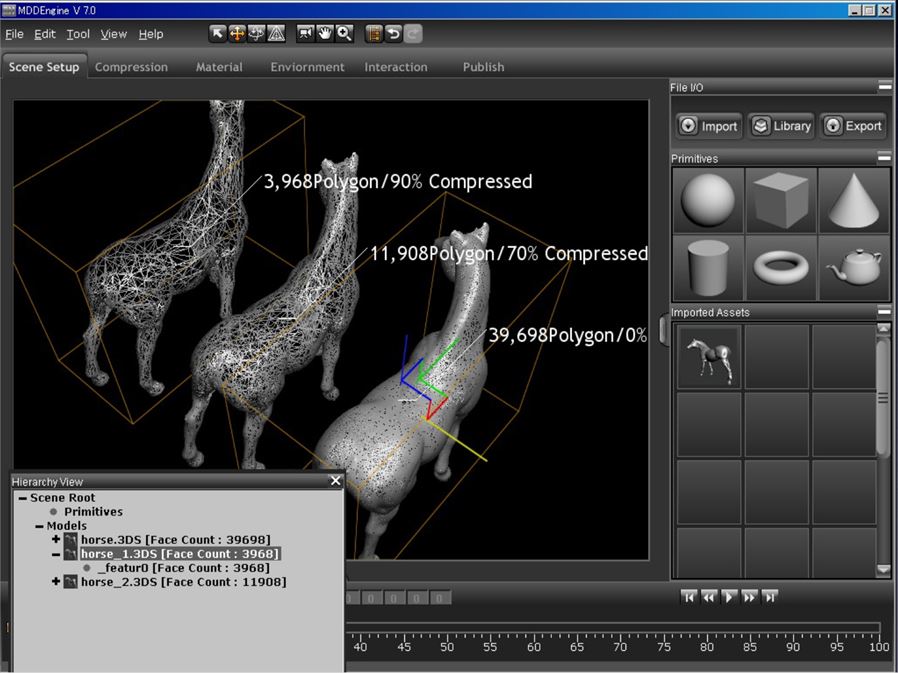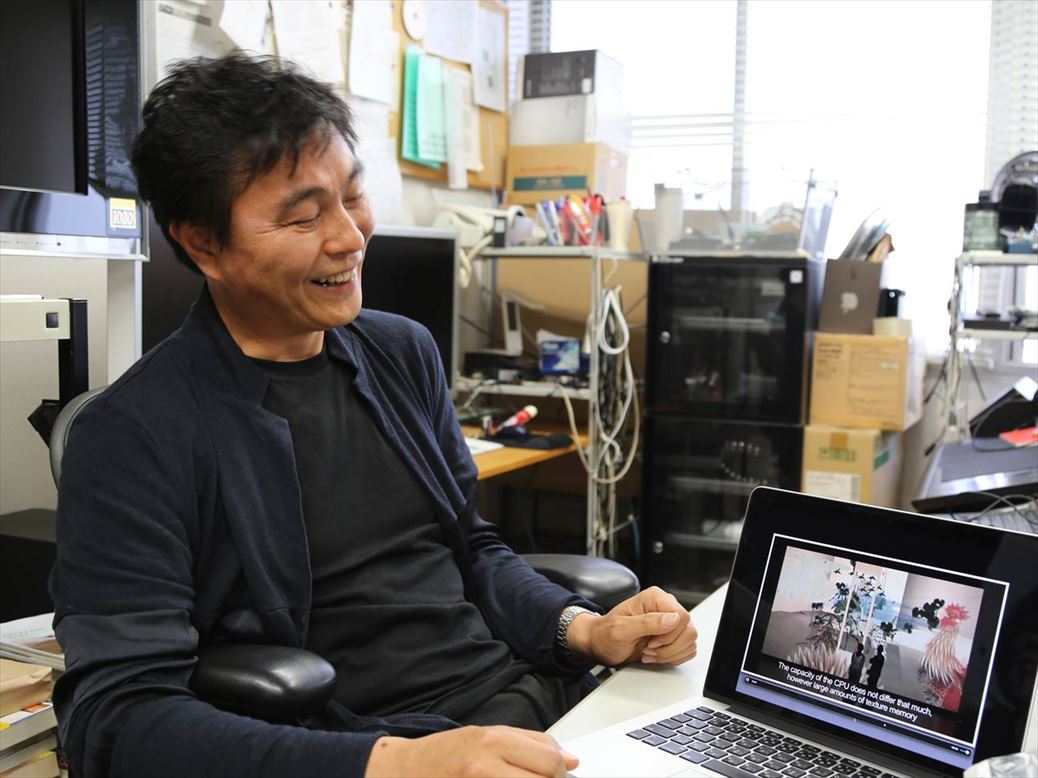TSUKUBA FUTURE
#060 The Power of Design which Conveys Information Realistically and Beautifully
Associate Professor KIM Sangtae, Faculty of Library, Information and Media Science

It is said that by far the greatest portion of the information we take in through our five senses is visual information. And it is true that impactful images and designs leave a lasting impression, such as beautifully realistic 3D images with which we are all familiar from movies and computer games. If these can be used more easily they will become a powerful communication tool for a wide range of spheres.
Toy Story, the Disney animation movie released in 1995, is well known as the first-ever feature-length fully CG (computer graphics) animated movie. The basic principal is the same for both CG and hand-drawn animation. Toy Story was animated using 24 images per second, each of which took a whole day to make. Why does it take so long? The appeal of CG animation is in its stereoscopic imaging. In order to create more realistic images, changes in the surrounding environment, which take place alongside the story, must be accurately depicted. The ways light is reflected by solid objects, the ways in which shadows are formed, the ways in which objects may flutter in the wind, etc., must be calculated according to the laws of physics. Naturally, this was extremely time-consuming as these calculations had to be made for every single image on a computer which was immensely less powerful than those available today. Prof. Kim has developed a far less time-consuming methodology which has a wide range of applications.
Three-dimensional CG data is actually an aggregation of small triangles known as polygons. Polygons of different shapes and sizes are combined to create stereoscopic images. The effects of light and wind are calculated by physical simulation, while everything else is expressed in polygon units. The more detailed the polygons, the more precise the images are, and the longer the calculations take. Prof. Kim has developed MDD Creator, a piece of polygon reduction software which creates a database of polygon models. The software does not trim all polygons equally, rather it determines which polygons may be deleted, depending on the conditions. In certain cases, over 90% of polygons may be omitted with only a minimal effect on the visual image.
Movies and computer games are not the only uses for 3D computer graphics. They are a powerful information design tool which can effectively convey new ideas and objects which do not lend themselves to visual presentation, in a way which avoids misunderstandings. When used in medical text books and pictorials, human and animal bones and organs can be shown from many different angles, and zoomed in and out, without the need for performing an actual dissection.

MDD Creator polygon reduction software.
In a joint-research venture with a university hospital, experiments are underway to carry out operations in which the locations of blood vessels and diseased areas are ascertained using monitors displaying stereoscopic images of organs created from patient CT data. Furthermore, a camera-operated system has been constructed which detects hand movements in front of the monitor, thus obviating the need for surgeons to touch computer devices during operations. This technology was developed more than ten years ago but was left unutilized as the need for it was not fully understood. But now, thanks to advancements in 3D CG technology, it has at last seen the light of day.

Software developed to transport us into the world of Ito Jakuchu. A virtual experience of Jakuchu's sensibilities
The applications for this technology in the field of art cannot be overlooked. "3D CG Museum 4K" technology for viewing works of art stereoscopically has been developed, and works by the Edo Period artist Ito Jakuchu have been rendered in 3D. Elements of the original pictures, such as flowers and birds, are cut out and laid out in a 3D space. When projected onto a large 4K screen, an intensely colorful image is revealed. Accompanying music and commentary give a far deeper understanding of the piece being displayed. Birds and butterflies painted by Jakuchu come alive and start to move. We can enter into the picture and relive the scenes Jakuchu was trying to depict. Images of tiny flying insects, which one cannot see just by looking at the original picture with the naked eye, have been found, highlighting the artist's tenacious pursuit of perfection.
Prof. Kim graduated from a university of fine arts in Korea and subsequently worked for an advertizing agency creating computer graphics for television commercials, but he tired of the lifestyle, which often involved sleeping in the office, and decided to further his studies. He chose the University of Tsukuba because it offers doctoral courses in design. At present, he is researching the concept of utilizing elements of design in IT technology and engineering. He often loses track of time when he gets carried away with his work, but he is confident of his own physical stamina.

During his military service in Korea he was selected for an elite special unit and endured three years of tough training. Prof. Kim says he had the misfortune to have a physique which met the requirements, but it also meant that he now has excellent stamina and survival techniques. This aspect of Prof. Kim's personality, which could not be further removed from the delicate work of design, perhaps gives the images he creates extra power and playfulness.
Prof. Kim's passion for detail can be seen in one of the university's promotional videos.
"University Guide for High School Graduates" (Puppet Theater Version; 2011)
Article by Science Communicator at the Office of Public Relations


